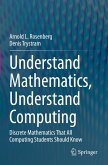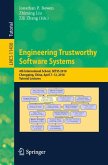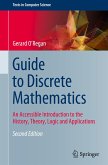In this book the authors aim to endow the reader with an operational, conceptual, and methodological understanding of the discrete mathematics that can be used to study, understand, and perform computing. They want the reader to understand the elements of computing, rather than just know them. The basic topics are presented in a way that encourages readers to develop their personal way of thinking about mathematics. Many topics are developed at several levels, in a single voice, with sample applications from within the world of computing. Extensive historical and cultural asides emphasize the human side of mathematics and mathematicians.
By means of lessons and exercises on "doing" mathematics, the book prepares interested readers to develop new concepts and invent new techniques and technologies that will enhance all aspects of computing. The book will be of value to students, scientists, and engineers engaged in the design and use of computing systems, and to scholars and practitioners beyond these technical fields who want to learn and apply novel computational ideas.
By means of lessons and exercises on "doing" mathematics, the book prepares interested readers to develop new concepts and invent new techniques and technologies that will enhance all aspects of computing. The book will be of value to students, scientists, and engineers engaged in the design and use of computing systems, and to scholars and practitioners beyond these technical fields who want to learn and apply novel computational ideas.
"The text is written in an easy to read format which generously incorporates narratives from the history of mathematics as well as rigorous proofs of the concepts presented. The appendices and references to other texts provide the reader with numerous sources of supplementary information for those wishing to delve into a subject at a deeper level ... . chapters are organized and clearly labeled to express which sections are appropriate for a beginning learner, an intermediate learner, or the specialist." (Tom French, MAA Reviews, October 3, 2021)
"Each chapter comes with several exercises from easy to difficult, the latter with complete solutions in the appendix. To accommodate the book to readers with different backgrounds and goals, the authors provide a guide which gives paths through the book for several courses. The exposition is always clear and motivating, no prerequisites are presumed, all terms and concepts are defined precisely, and there are many look-and-see proofs." (Dieter Riebesehl, zbMATH 1465.68004, 2021)
"Each chapter comes with several exercises from easy to difficult, the latter with complete solutions in the appendix. To accommodate the book to readers with different backgrounds and goals, the authors provide a guide which gives paths through the book for several courses. The exposition is always clear and motivating, no prerequisites are presumed, all terms and concepts are defined precisely, and there are many look-and-see proofs." (Dieter Riebesehl, zbMATH 1465.68004, 2021)








